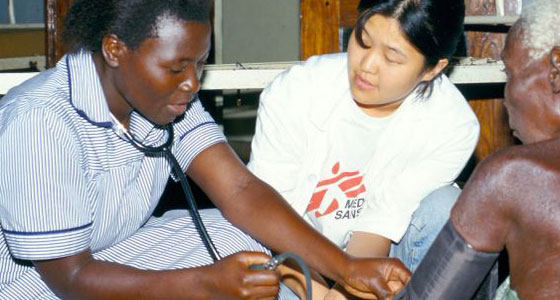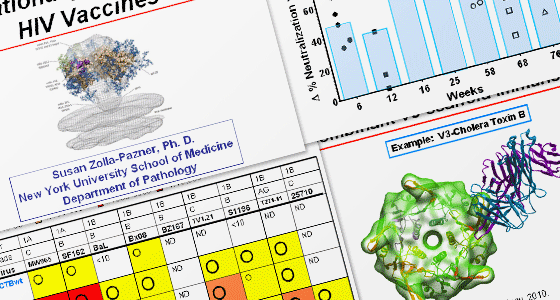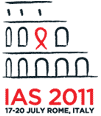
Presenter Anton Pozniak. Image from the International AIDS Conference in Vienna, 2010. ©IAS/Steve Forest/Workers' Photos
The study involved 195 people starting HIV treatment for the first time, in Europe, the Americas, Australia and South Africa. Study participants were randomised to take either lersivirine or efavirenz (also in the non-nucleoside reverse transcriptase inhibitor, or NNRTI class of HIV drugs) in combination with FTC/tenofovir (Truvada).
Lersivirine doses of 500 or 750mg, once daily, were tested.
After a year of treatment, 79% of people treated with lersivirine had an undetectable viral load compared to 89% of people treated with efavirenz. This difference was not statistically significant.
CD4 cell count increases were good, regardless of which NNRTI patients received.
Lersivirine didn’t appear to work as well in people with a high viral load (above 100,000 copies/ml at baseline).
Further analysis showed that most treatment failures in this group occurred in South Africa. Whether or not this was due to poor adherence or other factors is not clear.
Rates of neuropsychiatric side-effects were lower among the patients taking lersivirine, but nausea was more common.
Phase 3 trials examining the safety and effectiveness of lersivirine are now planned.











Connect with NAM on Facebook: Keep up to date with all the exciting projects, latest achievements and new developments that are going on in the world of NAM.
Follow NAM on Twitter for links to hot off the press news stories from our editors covering key developments and conferences as they happen. Our news feed is linked to www.twitter.com/aidsmap_news and we also tweet from www.twitter.com/aidsmap
Follow all the conference news by subscribing to our RSS feeds.